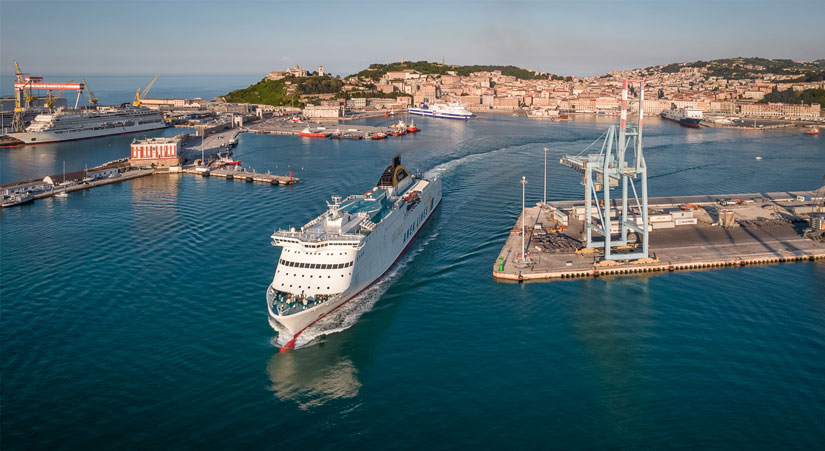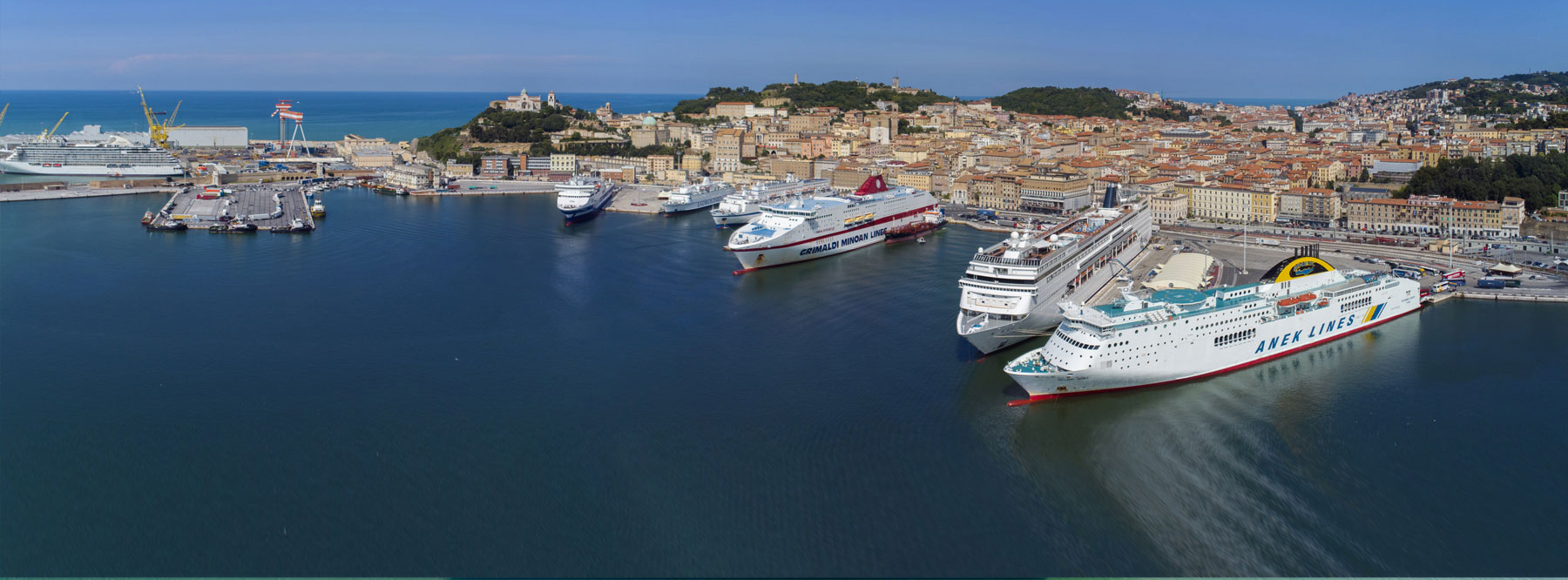
Port of Ancona
The Gulf of Ancona, between two hills, has been a safe shelter for sailors since the 16th century BC.
Findings of the Mycenaean age vouch for existing trades with Greece since the XIII century BC, then extended to the Istrian and Dalmatian coast by the Piceni.
Finally, the Dorians, coming from their initial outposts in Syracuse, settled in the port and in the territory, founding the city of Ankòn which, in Greek, means elbow and which refers to the morphology of the promontory that protects the Gulf of Ancona.
The gulf was equipped with the first piers and, subsequently, the Romans completed the work of their Greek predecessors.
Today the port is one of the most vital and active in the Mediterranean and plays a primary role in commercial exchange. It is classified as port of international importance by the European Union, inserted in the Scandinavian-Mediterranean and Baltic-Adriatic corridor of the TEN-T networks.
More than a million passengers transit through the port of Ancona on ferries and cruise ships towards the shores of the Eastern Adriatic (Croatia, Albania, Greece), also thanks to the barycentric position of the port in the area. Container traffic, which has grown in recent years, has exceeded 160,000 TEUs, attracting all the main world carriers of container transport. Also in this sector, as well as in the ferry and bulk carrier traffic - where the important contribution of the oil traffic by the API Falconara Marittima refinery is noted - the port of Ancona reveals its vocation as "Gateway to the East" and terminal of the Motorways of the Sea for the Adriatic-Ionian Macroregion, serving the Italian and European markets.














